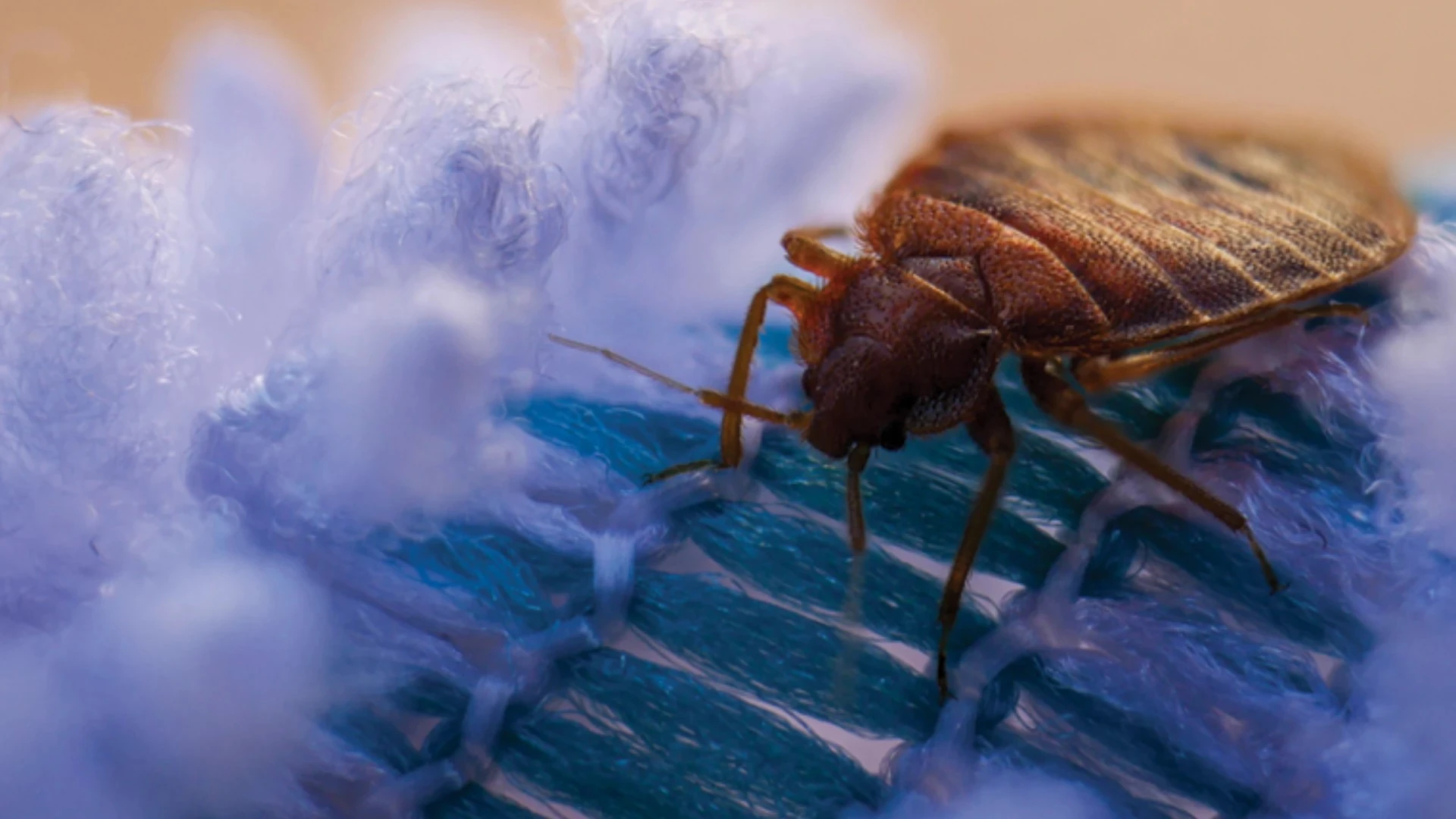House mice are the most common rodent pests in our urban landscapes and have been labeled as a "mammalian weed" by researchers and rodentologists. Millions of dollars are spent every year managing the house mouse by PMPs and do-it-yourselfers. But what makes the house mouse such a formidable foe, particularly in the fall and winter months, when these cryptic pests enter our structures seeking heat, food and refuge?
A common urban myth often heard states that mice are contortionists and lack rigid skeletal structures, but this is untrue. In reality, the mouse’s head height (∑ inch) dictates where it can and cannot enter. Once the mouse’s head is in, the body can follow.
Some of the more mouse-vulnerable entry zones at facilities include ground-level, overhead doors; improperly sealed utility penetrations; and sub-slab foundation cracks. Mice are also excellent climbers and can easily scale rough surfaces such as wood, brick and block, then gain entrance via loose soffits or unsealed rooftop penetrations.
House mice also commonly hitchhike into buildings, particularly food warehouses and production facilities, within incoming goods and pallets. Employees responsible for inspecting incoming product (the "gatekeepers") should be trained how to properly inspect incoming goods relative to mouse detection. Every gatekeeper should have a bright flashlight to illuminate nooks and crannies of palletized goods to search for rodent signs such as gnaw marks, fecal pellets, grease marks and urine stains.
Inspecting. Begin with an outside inspection to look for conditions that may be attracting rodents to the facility such as food spillage around loading dock doors or dumpsters, piles or stacks of trash or building materials and dense vegetation around the foundation that provides cover and hides burrows and trash.
Look for rodent entry points into the building: cracks in concrete slabs or brick or concrete openings around conduits for utility lines, unscreened roof and wall vents, poorly sealed heating and air conditioning ducts, worn or damaged floor drain covers, spaces around loading dock doors that seal tightly…the list is endless.
Look for standing water. This could be a nearby retention pond, landscape sprinklers, drips from air conditioners or nearby ditches. Rats need water every day and will congregate in these areas.
When you find a suspected entry point, look closer for rub marks — dark, greasy stains that shows the rodents’ travel routes. Rub marks may be found around pipes, along beams, along baseboards — wherever rodents are touching surfaces in their travel.
Every food storage warehouse should have an 18- to 24-inch white inspection aisle inside the warehouse along the exterior walls. This strip allows inspectors to walk behind stored products to look for rodents and also provide a place to install traps and other devices. Aisles painted white make it easier to check sanitation and find droppings and other rodent and insect evidence.
All food should be stacked on shelves or on pallets up off the floor with slip sheets on the bottom of the pallet to prevent rodents from burrowing into food products.
Check inside drop ceilings and utility runs and attic/roof areas (particularly for roof rats). Check inside wall voids. You can open up the wall or you can insert a borescope or remote camera.
Apply a tracking patch of a non-toxic powder along rodent runways. Place a thin layer of dust such as clay or talc with a sifter or duster. Apply the 12- by 4-inch patch in rodent runways, near rub marks, in the same places you would apply traps. Check frequently for rodent footprints.
Look for droppings, which are most numerous along rodent runways, near harborage sites and near food sources. Remove rodent droppings and nesting material as you find them; this ensures that rodent signs found on follow-up visits will be evidence of new or an ongoing infestation.
Inspecting inbound products with a black light is vital to the "gatekeeper" approach. The pest manager needs to be trained to learn the proper inspection techniques and interpret the findings.
Shadowy corners are favorite places for rodents because the low airflow here will prevent them from losing vital body heat and allow them to go undetected by their predators, including humans. Shadowy corners are also where food products accumulate. The house mouse only needs about five grams of food a day to survive. This accumulated food needs to be removed to help remove a food supply for rodents and stored product insects close to food.
There are many rodent-vulnerable areas of food-related facilities. These are places where mice are frequently found:
- Equipment base voids (warmth, darkness, heat)
- Warm walls with penetrations
- Ceiling above heated areas
- Cooler walls
- Manager’s desk and room (food in drawers)
- Low- and high-level box clutter
- Any structural floor or wall gap
- Long-term storage items
In food warehouses and retail stores, it’s important to control mice before they get into the building. This is especially true in the fall and winter months. Once they’re inside, not only do you have a widespread mouse problem, you also risk product contamination and damage. Establish an outside perimeter defense to protect against inside invasion by mice. The more of these conditions around the outside of a warehouse, the more likely that mice will find their way inside.
References
Techletter by Pinto & Associates, Mechanicsville, Md., www.techletter.com.
Mallis Handbook, Ninth Edition, Chapter 1 by Robert Corrigan.
Rodent Control: A Practical Guide for PMPs by Robert Corrigan.
*****
Conditions Attracting Mice to the Perimeter of a Warehouse
- Food or feed spillage around loading dock doors, dumpsters, compactors, delivery entrances or railroad tracks
- Garbage stored closer than 50 feet from the door
- Odors from garbage or animals
- Piles or stacks of trash, building materials, pallets, etc.
- Equipment stored outside, especially in weedy areas
- Dense, low-growing shrubs around foundations that provide cover and hide burrows and food piles
- Open lids on dumpsters and garbage cans
- Tall weeds, grass or vines
- Weed growth along fence lines
- Railroad tie edging
- Fruit trees or farm crops within 300 feet of the building
- A ditch, canal, pond or other standing water near the building
- Areas of loose soil
- Gravel areas with rock of large diameter (greater than ½ inch) rather than small
- Guard dog house or pen
- Neglected sheds, garages or other outbuildings on the property
Once you have mice around the perimeter of a building, it’s only a matter of time until they find their way inside.
*****
What Can Mice Do?
The house mouse (Mus musculus) is a prolific breeder: indoors, mice breed year round. A female mouse can be sexually mature 1½ months after birth, can produce six babies in each litter and can have as many as 10 litters in a year. That’s 60 new mice just from one pregnant female. If you assume that half of her offspring are also females that will each be producing 10 litters, you can see what you are up against.
Mice have extraordinary physical abilities. They can jump to the floor from a height of 8 feet and run up some vertical surfaces. They have excellent balance. If they do fall, they land on their feet. They can climb and run along pipes, cables and electrical lines. They can even travel for a considerable distance upside down. They can swim. They can adapt to almost any kind of environmental conditions, even surviving for generations in a frozen meat locker. Their small body size allows them to easily stow away and be transported to new sites. They can squeeze through a slot-like opening that is little more than ¼ inch (7 mm). These capabilities allow mice to easily move into a building and then move from floor to floor. You can see why it’s hard to completely mouse-proof a building.

Explore the October 2010 Issue
Check out more from this issue and find your next story to read.
Latest from Pest Control Technology
- Rentokil Terminix Expanded in Key Markets with 2024 Acquisitions
- In Memoriam: Joe Cavender
- Certus Acquires Green Wave Pest Solutions
- Liphatech Adds Alex Blahnik to Technical Team
- Do the Right Sting: Stinging Insect Identification, Management, and Safety
- VAGA's 8th Annual Veterans Thanksgiving Appreciation Dinner
- Clark's Blair Smith on the Response to Increased Dengue Fever Cases in Southern California
- WSDA, USDA Announce Eradication of Northern Giant Hornet from U.S.





